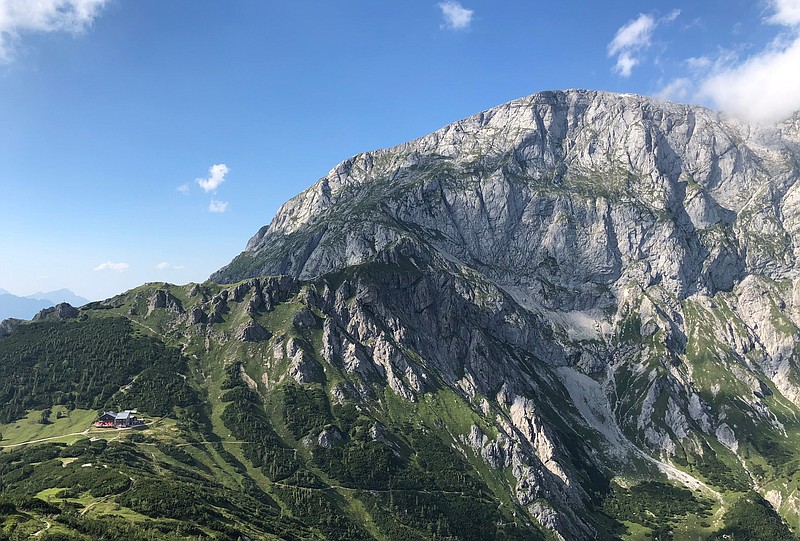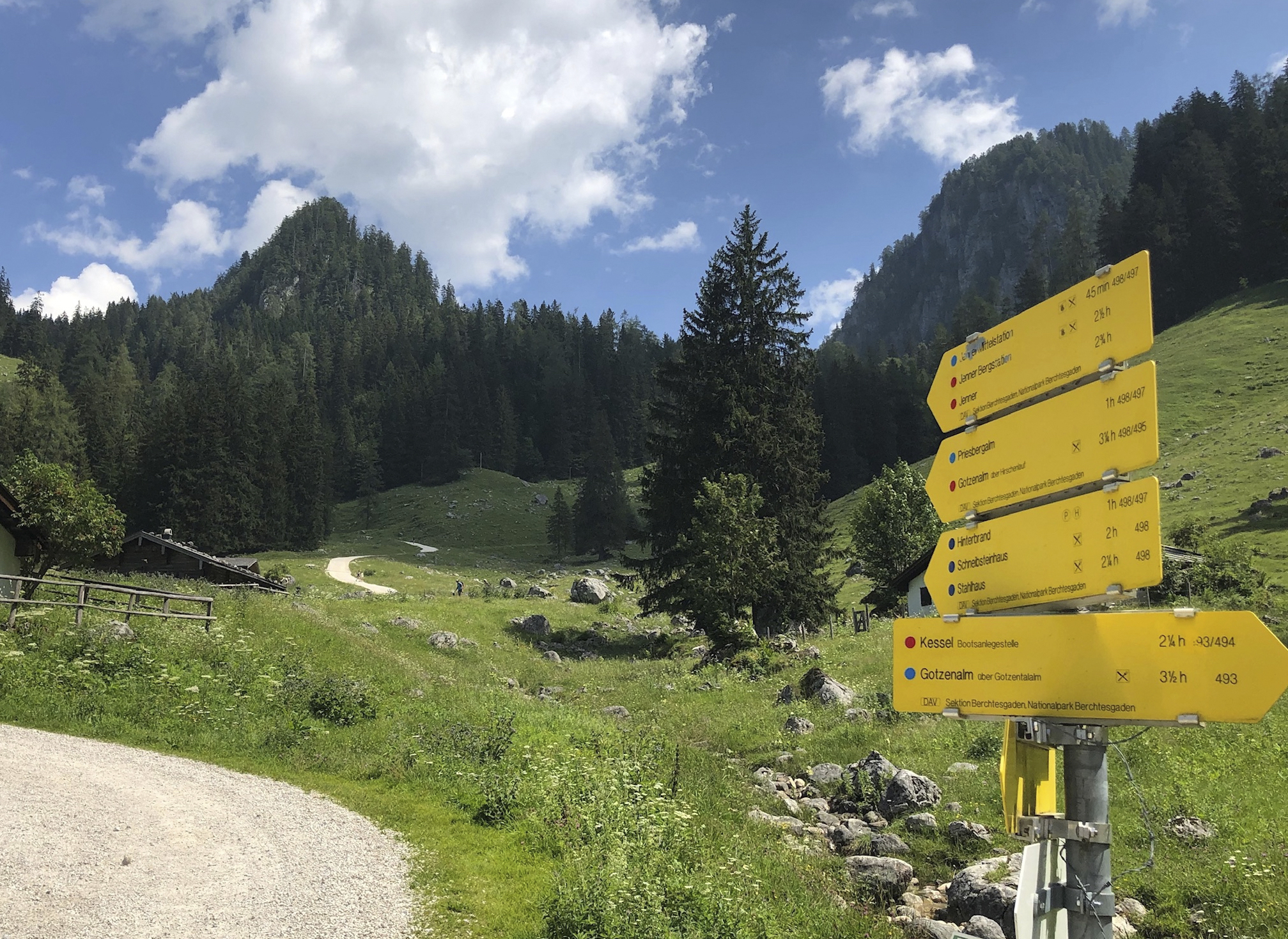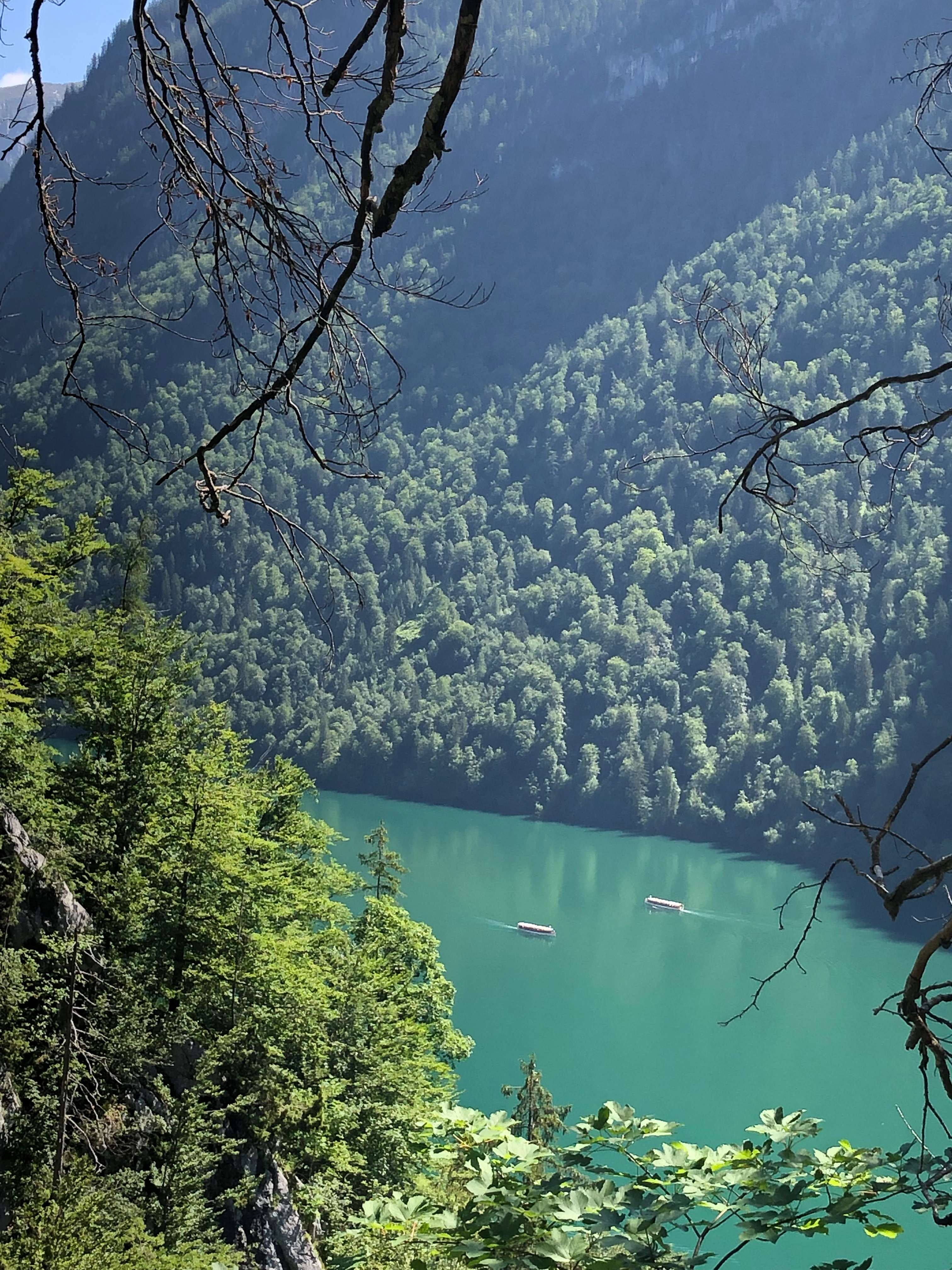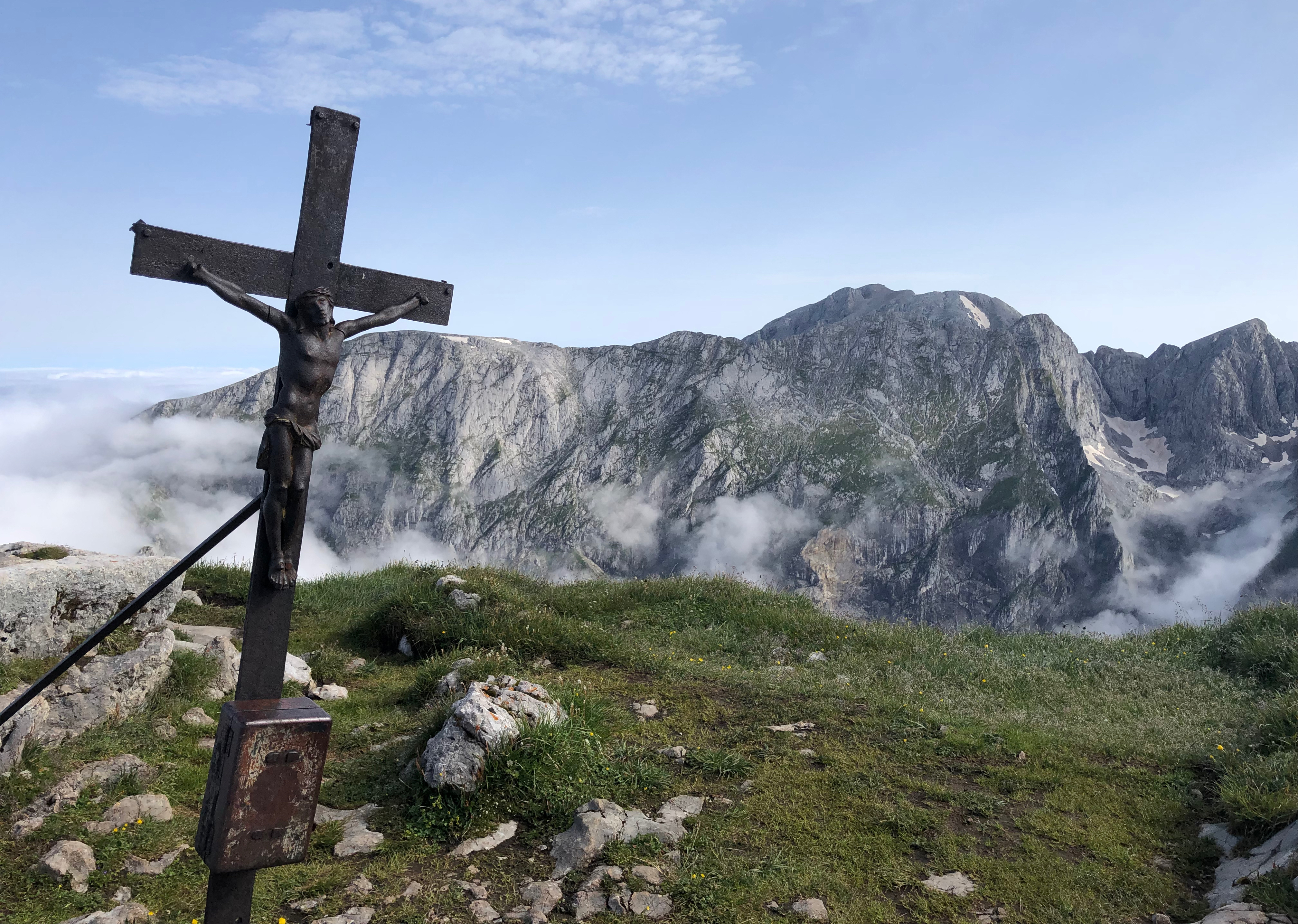By Mike Eckel
Associated Press
SCHÖNAU AM KÖNIGSSEE, Germany -- At 23 minutes before midnight, at 1,703 meters (5,600 feet) above sea level, the lashing rain and furious winds outside the darkened bunkroom prompted two questions to turn over in my head: Will the roof of this hut be ripped off in the dead of night? Will I be able to continue my ridge trek to my next destination on the German-Austrian border the next day?
Several sleepless hours later, the answers emerged: 1) No, these aren't just simple mountain huts and 2) yes, this is typical Alpine weather for southern Bavaria.
And so at dawn, I trekked out, up through the undercast clouds.
The reward was the majesty of the Bavarian Alps, showering glory upon those willing to hike serious trails, and maybe endure copious amounts of apricot schnapps in the company of hearty German hikers.
This is Berchtesgaden, a national park in southeastern Germany, wedged into a thumb of land poking into Austria. The Alps slash the skies, in jagged granite and knife-drops into sudden valleys.
Berchtesgaden's huts are serious structures. Supplies are helicoptered in, or hefted on cable cars. They range from huge -- Watzmannhaus has 200 sleeping spots -- to small -- Wasserhalm has a few dozen. Some are concrete and steel; others have simple wooden roofs and beams. All serve serious meals: soups, stews, beef-and-dumplings. And lots of beer and wine.
Spend your days trekking steep trails and meeting random people. Then swap stories about hiking, and life, and then you're drinking beer and schnapps, and then you're fumbling through languages and life tales, and then, by lights out, you're hugging and toasting and laughing and crying.
Trekking into Berchtesgaden is easiest from the northern tip of Konigssee, an 8-kilometer-long (5-mile) impossibly turquoise lake. The town at the tip is a tourist mess: ice cream, T-shirts, lederhosen and Tyrolean hats. Privately run electric boats run passengers up and down the lake seasonally, offering access to Germany's highest waterfall or the stoic lakeside Church of St. Bartholomew's.
Many visitors forgo the hike and instead take the year-round Jennerbahn cable car up 1,874-meter (6,200-foot) Jenner Mountain, where there's a massive restaurant and spectacular views.
For hikers, it takes about 15 minutes to leave the madding crowds for quieter wood trails. Some are rough footpaths; others allow service vehicles to supply a couple smaller huts that dot the hillsides and provide meals to day-trekkers. Not far from Koenigsbachalm, you can poke your head into a tiny distillery where schnapps are made from the mountain waters.
On the eastern end of Berchtesgaden is the Austrian border and Carl von Stahl Haus, where I overnighted. I ate lentil stew and drank German pilsner into the evening, until the storm lashed us with marble-size hail and gale-force winds. In the midnight hour, the winds banged open the bunkroom windows.
At dawn, the soup of clouds gave many of us doubts. But after climbing further up a sodden trail, I crested at Schneibstein (2,276 meters, or 7,467 feet) into brilliant skies. The clouds below shrouded everything but the highest peaks.
Trails are well-marked. They include degrees of difficulty, similar to ski trails. They also include not mileage, but estimated hiking times.
Once I realized that the times were VERY conservative, I worried less about making it to my destination on time and instead hiked in mesmerized awe.
Wasseralm in der Röth (1,423-meters, or 4,469 feet), my next destination, was a cluster of three modest buildings folded into a hollow ringed by sub-peaks. Torrents of evening and overnight rain sent a raucous stream bursting its banks and nearly turned the buildings into islands.
It also made for a wet dinner conversation over vegetable stew and stacks of dark rye bread. The other hikers and I huddled under dripping eaves before retiring to a common room, where a wood-fired stove dried wet clothes and warmed bodies. White wine, beer and schnapps kept conversation going until 10 p.m. lights out -- a strict rule of the huts.
Did I mention the boot drying room? An essential elements of German huts: rows of heated metal bars to hang up and dry your boots out. If you've ever woken up to sodden boots, the joy of the boot drying room is immeasurable. Equally immeasurable is the odor of dozens of wet hiking boots drying out in a room overnight.
When I finally reached the Konigssee's shoreline, it was impossible not to contemplate going for a swim. I had no swimsuit, however.
No matter.
A few moments later, a group of older German men showed up and, without hesitation, dropped their packs, dropped their clothes and hopped into the shimmering waters full monty.
Wouldn't you?
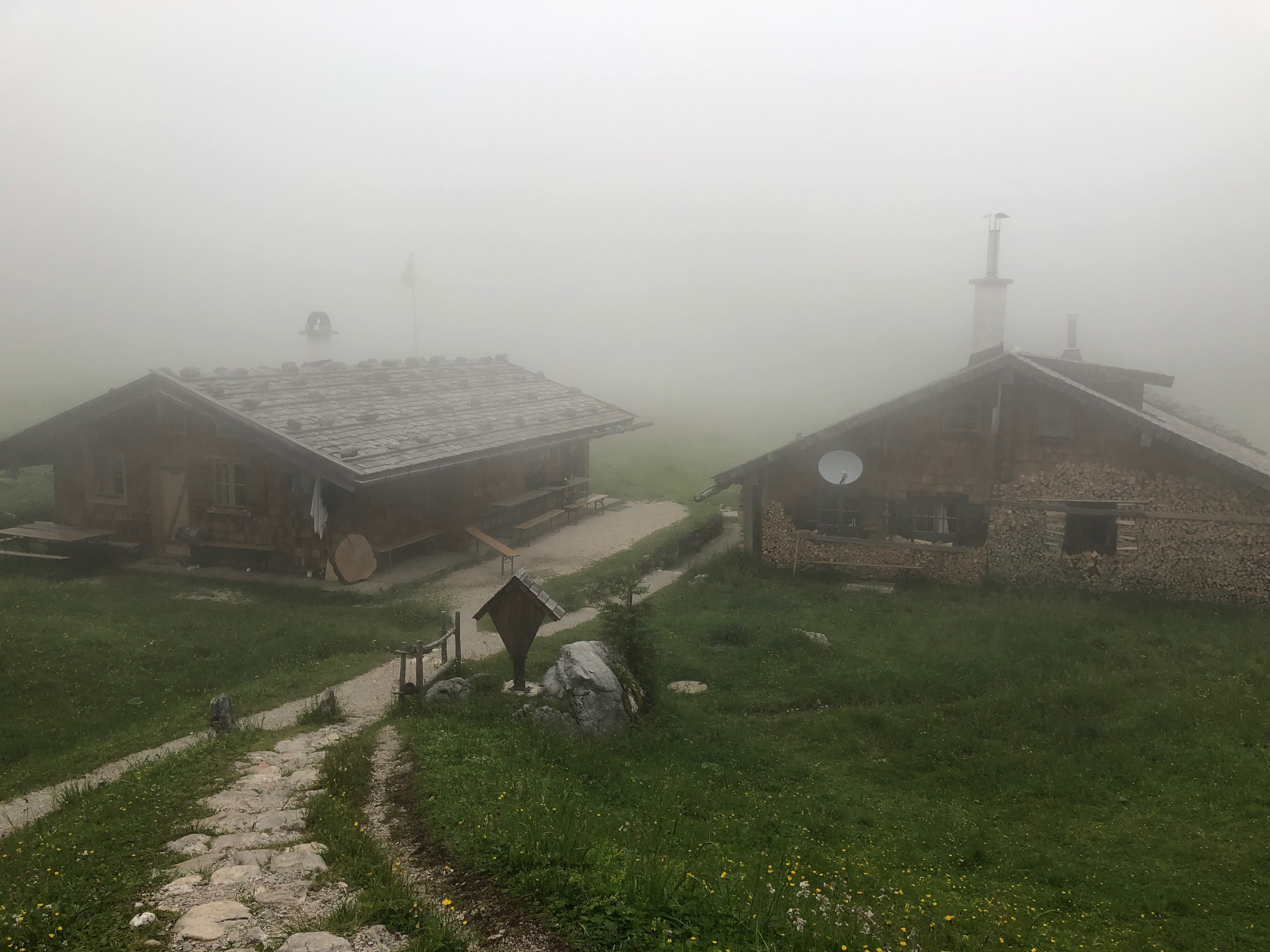 Fog surrounds the Wasseralm in der Röth, located in the Hagen Mountains of Berchtesgaden National Park on June 28, 2022. Many of the huts in the Berchtesgaden National Park, and throughout the Alps of Germany, Italy, Austria, and Switzerland, are serious concrete-and-steel-girder structures, built to stand year-round. (AP Photo/Mike Eckel)
Fog surrounds the Wasseralm in der Röth, located in the Hagen Mountains of Berchtesgaden National Park on June 28, 2022. Many of the huts in the Berchtesgaden National Park, and throughout the Alps of Germany, Italy, Austria, and Switzerland, are serious concrete-and-steel-girder structures, built to stand year-round. (AP Photo/Mike Eckel)